Snow Leopard in Nepal
The beauty of the snow leopard is its solitary nature. Although this cat rarely interacts with others, it remains majestic while hunting.
The beauty of the snow leopard is its solitary nature. Although this cat rarely interacts with others, it remains majestic while hunting.

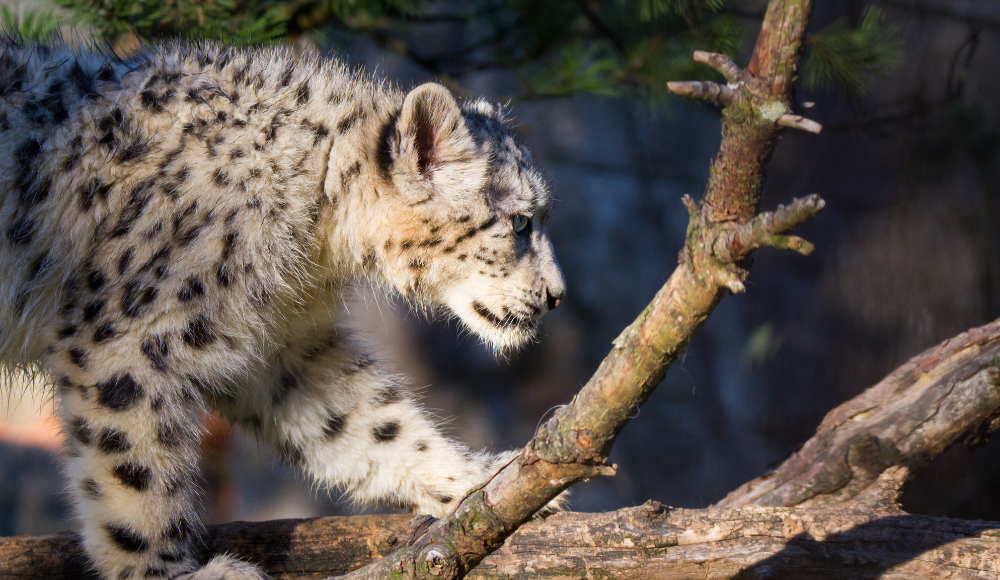
The Himalayan country of Nepal is home to one of the world’s most sightly creatures: the Snow Leopard. The snow leopard can be found as high up as 16,400 feet in snow-covered mountains. They are solitary and elusive creatures - their thick fur serves to protect them from the cold temperatures and their large size makes them powerful predators.
Snow Leopards are endangered with only around 4000-6000 left in the world, but this number is due largely to deforestation. Some reports suggest that because of deforestation, there is less habitat to hunt in. Therefore the leopards are forced to move into human-populated areas where they are at risk of poaching. These cats have an incredible aesthetic and their tail can be as long as their body. They have dense, smoky-grey fur covered in open, dark grey rosettes. They nearly disappear in the mountains because they blend in well with the rocky hillsides.
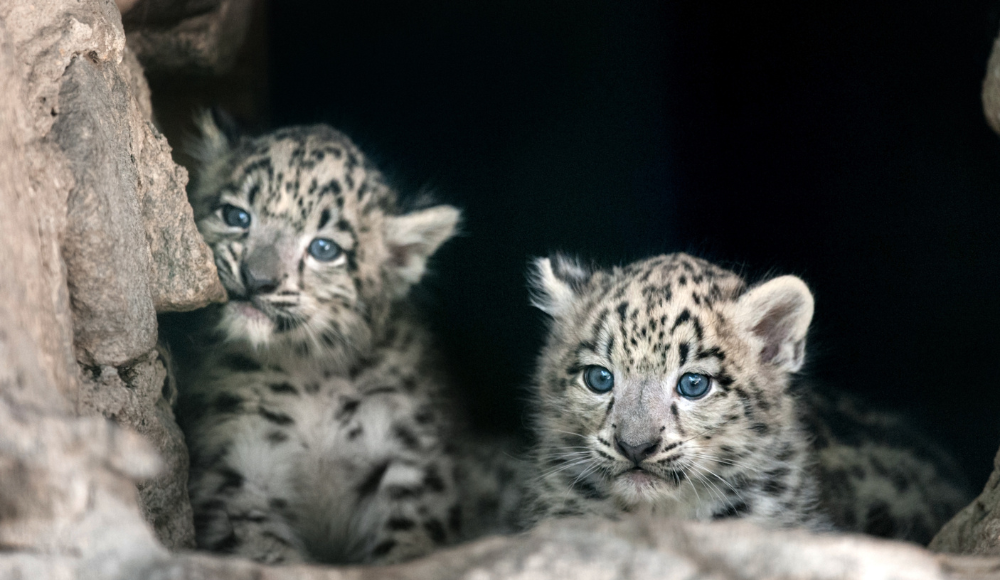
Snow Leopard in Nepal is considered an endangered species with its declining population in the highlands. Though the Snow Leopard is a rare species in Nepal, it has been spotted in the different Himalayan landscapes in Dolpo, Everest Region and other Himalayan areas.
The popularity of Snow Leopards in Nepal is enhanced by writer Peter Matthiessen. His book ‘The Snow Leopard’ is one of the bestsellers and describes Snow Leopard as one of the most beautiful creatures. He writes, ‘It is, I think, the animal I would most like to be eaten by’.
|
Animal |
Snow Leopard |
|
Scientific Name |
Panthera uncia (previously: Uncia uncia) |
|
Physical Features |
Height: 55-65 CM |
|
Length:90 – 115 cm (36 – 44 inches) |
|
|
Tail: ca. 100 cm (40 inches) |
|
|
Weight: 60-120 Pounds |
|
|
Life - Cycle |
Mating Season: January - Mid March |
|
Fertile Age: 3 Years after birth |
|
|
Behavior |
Nature: Shy, Elusive and Solitary |
|
Active Time: Dawn and Dusk |
|
|
Patrol Home: Hundreds of Sq. KM |
|
|
Habitat |
Mountains of Central Asia including Nepal |
|
Estimated Global Population |
Between 3,921 to 6,290 |
The snow leopard is a large cat, with a unique white coat and spots that vary in size and number. It's found primarily on the high mountain ranges of central Asia, but also inhabits parts of South Asia. Snow leopards hunt mostly at night and prey on ibexes, hares, marmots, pikas, and other small mammals.
The snow leopard's spotted pattern allows it to blend easily into the landscape. It has adapted to living at high altitudes. The snow leopard weighs only 24-54 Kgs. Its tail can be almost 40" long. As a very elusive and solitary cat, it has been given the nickname "ghost of the mountains." It's one of the most feared felines in the world. Yet it is also one of the most beautiful.
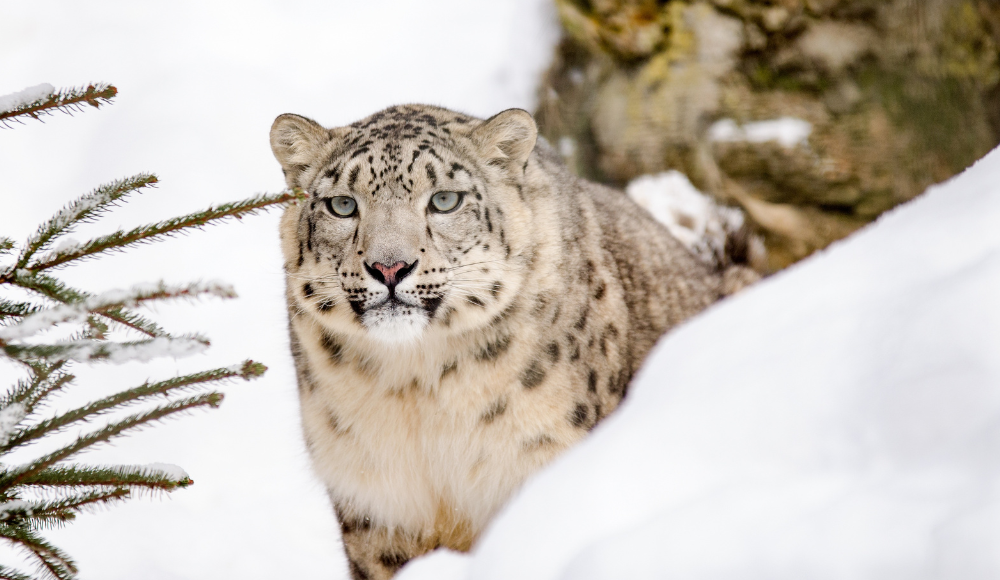
This large cat can range up to 115 cm in total length. It has a body shape similar to that of the leopard but smaller with short legs, a long tail and small ears. Unlike most cats, it has a whitish coat and black spots.
Snow leopards are distributed across the central and northern regions of the Himalayas, extending into Pakistan and China. Nepal is also one of the major habitats of the Snow Leopard. It is said that only twelve countries have the appropriate habitat for the Snow Leopard and it is rarely seen in these countries. The Himalayan countries where the Snow Leopard is said to be found are Afghanistan, Bhutan, China, India, Kazakhstan, Kyrgyzstan, Mongolia, Nepal, Pakistan, Russia, Tajikistan, and Uzbekistan. China, on the other hand, holds the majority of the habitat area for the most beautiful Himalayan creature.
The typical climate for the Snow Leopard is they prefer cold and dry climates. The cliffs, rocky outcrops and ravines are mostly where they stay and it provides them with a clear view of the prey. These Cats are nomadic in nature. They travel along the ridge lines and leave marks in search of prey and often travel alone.
Snow Leopard is Shy, Elusive and solitary in nature. They are known to travel alone and are most active during dawns and dusks. Mornings and evenings are their favorite times to prey on. Males and females are seen together during mating season. Or, Mother and cubs can be seen together. The Cubs get away from their mother after they become two years older. The dispersing and solitary nature of these wild cats is called a crepuscular activity pattern by scientists. This mammal is not aggressive towards humans. Even during disturbances, Snow Leopards will just run away. There are no records of Snow Leopards attacking humans.
Male and female Snow Leopard travel together during January to Mid-march period. This is the mating season for the Snow Leopard. The copulation takes place and the female becomes prepared for the birth. There is no hibernation, they are active all the time. The pregnancy period lasts for about 93 to 110 days. On the maturity of pregnancy, the mother will retire and enter a den and give birth to cubs in June or July.
Cubs do not open their eyes for about 7 days. They are small and helpless. The mother Cat raises her offspring alone, gathering food and providing shelter. After the cubs reach two months, they can eat solid food and as soon as they reach three months, they will start following their mother. With the mother's guidance, they learn to hunt in the wild.
Encountering a snow leopard is a rare privilege in Nepal. The magnificent Himalayan backdrop offers a chance, perhaps a possibility, to witness snow leopards in this beautiful country. The Himalayan belt of Nepal includes Api Nampa Conservation Area, Kanchenjunga Conservation Area, Shey Phoksundo National Park, Manaslu Conservation Area, Makalu Barun National Park, Sagarmatha National Park, Langtang National Park etc. are the major mountain areas where the possibility of its existence is often boasted. In many of these places, a few photographers have succeeded to capture the photographs of this wild cat.
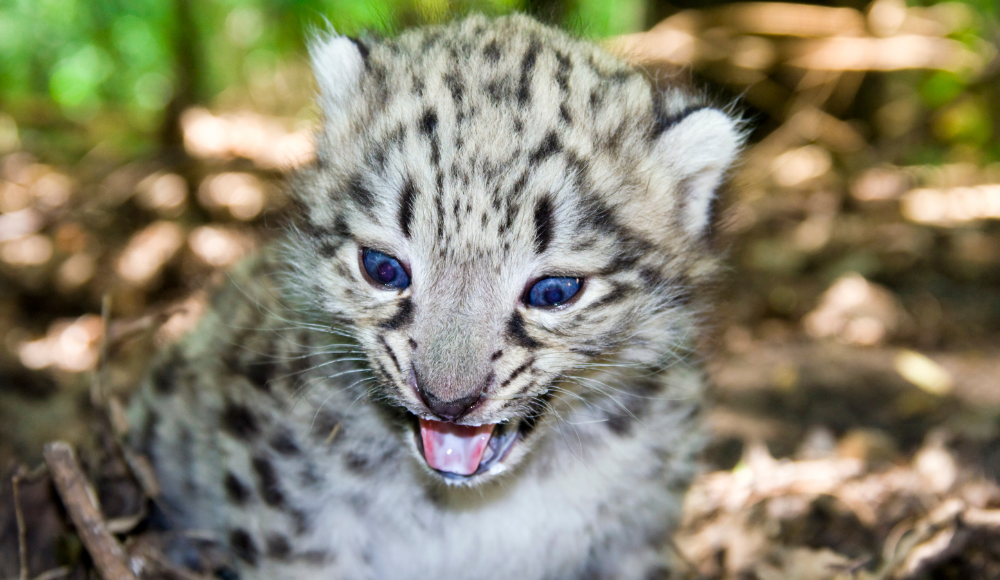
There are many independent travellers who visit Nepal and stay months in the mountains in a quest to witness this incredible animal. Snow Leopards in Nepal are about 400 in number as shown by some preliminary research predictions. Since this animal resides in the higher elevation, Nepal’s ecosystem, being remote and unexplored, has the potential to conserve these magnificent species. The WWF Nepal, National Trust for Nature Conservation (NTNC), Snow Leopard Conservation Committee (SLCC), Snow Leopard Network etc. are working in Nepal to protect and conserve the Snow Leopard. However, global warming remains a major challenge as the ice of mountain landscapes melts away causing habitat fragmentation.
The snow Leopard is sighted and documented by conservationists, locals, photographers and people who spent days in a quest to witness this magnificent species. It is said that the chances of a Snow Leopard are high in Upper Dolpo, Mugu, Manang, Mustang and Taplejung districts. Thus, trekking or planning a remote exploration in these mountain areas may reward you with rare snow leopard sightings.
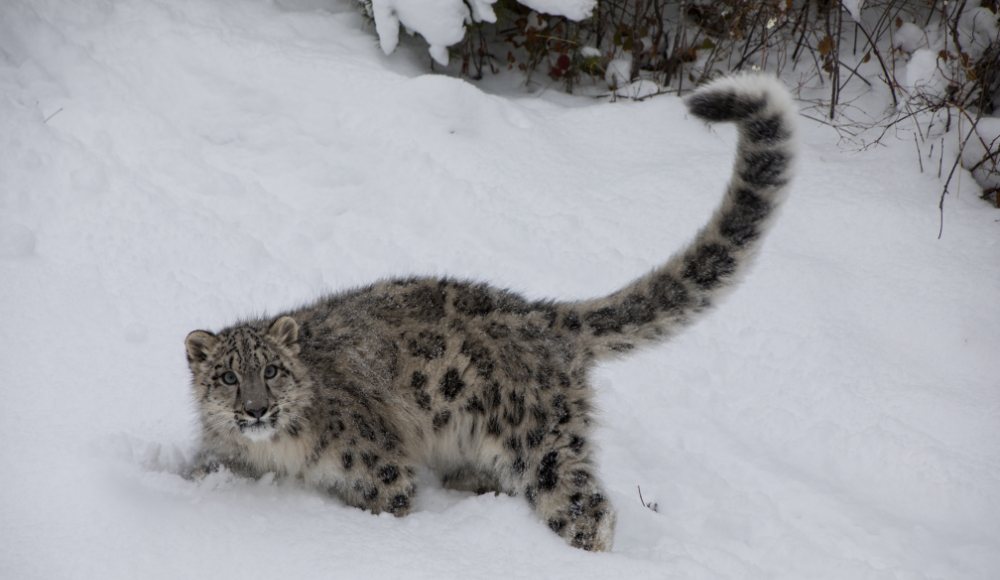
Many photographers camouflage in the mountains in search of Snow Leopard. While many have documented the wonderful habitat and life of the Snow Leopard, some may not be able to see it. If you want a sighting of Snow Leopard in mountains, trekking to the mentioned districts and potential zones may be rewarding. For the sightings, a fixed itinerary or a group departure is not an appropriate option. Instead, a feasible plan and private trip will be rewarding if you want to explore the wild cat in Nepal.
The nature of this shy cat is very complicated to identify. The scarce number of this animal and the remote settlement have made it very hard to discover detailed facts about this species of Cats. Snow Leopards are rarely spotted in the wild as they camouflage themselves and blend so well with nature. In Nepal, they live in the high mountains and elusively travel in the highlands from one place to another. These mammals have strong lungs and large chest cavities which allow them to breathe in the thin air of higher elevations. This is due to the lower air pressure in the Himalayas than in the sea level. A large chest helps them obtain oxygen from the atmosphere.
The long and thick fur of snow leopards helps them to stay warm. The yellowish-grey fur with black rosette-shaped spots helps them to hide and camouflage with the rocky and snowy climate of the highlands which makes it nearly invisible. However, with good observation, the cat can be spotted.
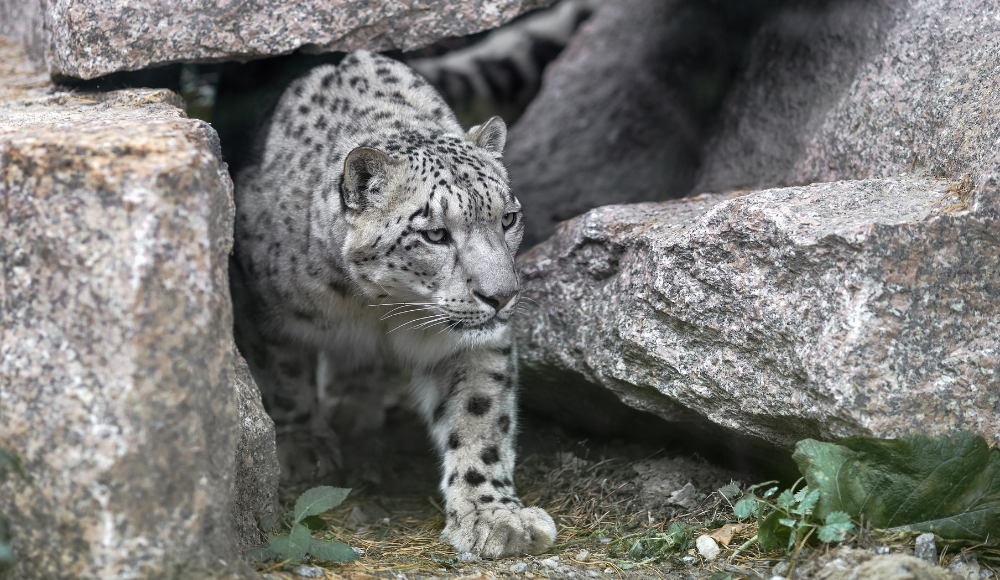
The cat's big, short nasal cavity warms the air before it reaches its lungs, and its round, short ears minimize heat loss. The soft, dense fur of the snow leopard gets even thicker throughout the winter to keep the cat's body warm.
The large furry paws of Snow Leopard help them to walk on rocks and snow without getting stuck. The main prey species of Snow Leopards are mountain sheep, goats, rodents, birds, and deer. There are no records of Snow Leopards attacking humans. So, it is said that the nature of snow leopards is shy and escapes from the settlement due to human presence.
Due to their long and muscular limbs, they can jump as high as 30 feet. This helps them to attack and pounce on their prey. The long tails of Snow Leopard help to gain balance and they are extremely precise in preying on their food. They also use tails to cover their eyes and face while sitting which helps them to stay warm in cold conditions.
The Snow Leopard is a common name for this wild Himalayan cat. The scientific name of this mammal is Panthera uncia (previously: Uncia uncia). Uncia - the genus name is derived from french and is sometimes also called ounce. Uncia was originally named for the European lynx. There are many names for this leopard according to its place of origin. The local nomenclature is based on local dialects. Some of the popular names and the native places where it is known are provided here.
|
Accepted Name |
Snow Leopard |
|
Scientific Name |
Panthera uncia |
|
Afghanistan (Pashto) |
wāwrīn pṛāng (واورين پړانګ) |
|
Ladakhi |
Shan |
|
Tibetan |
Zigsa |
|
Mongolian |
Irves (ирвэс) |
|
Kazakh |
Bars or Barys |
|
Kyrgyz |
Ilbirs |
|
Hindi |
barfānī chītā |
|
Urdu |
برفانی چیتا |
|
Dari |
palang-e barfi (پلنگ برفی) |
|
Sanskrit |
Him Tanduwa (हिम तेन्दुआ) |
|
Nepali |
हिउ चितुवा / हिम चितुवा / Hiu Chituwaa |
Snow Leopard is an endangered big cat from the Himalayas of Asia. Snow Leopard conservation efforts have been made by different conservation communities and organizations since the 1990s but no significant progress is seen towards protecting this incredible mammal. There are still many threats to their survival, so conservationists turn their attention to monitoring population numbers and assessing risk factors. Threats include people's changing lifestyles and deforestation. The risk factors in their environment include fragmentation of habitat, snow leopard mortality, lack of genetic diversity and climate change. The process of reintroducing and translocating this animal into the wild is not so successful as they are prone to adapting to the new climate. However, in the Himalayan belt, different kinds of programs are initiated to protect and conserve the Snow Leopards.
The animals are increasingly put at risk by rapid deforestation, human encroachment, Poaching and illegal hunting.
Some of the major threats associated with the protection of Snow Leopards, as highlighted by Snow Leopard Trust are enlisted here.
Poaching: The hunting of this endangered animal is a major issue. Different organizations such as WWF are continuously working to protect the animal but illegal hunting remains one of the major challenges in protecting wild cats. The Illegal hunting for the fur trade and trade in bones for traditional Asian medicine is significantly seen in some parts of Asia.
Loss of Prey: The declining numbers of wild prey in higher elevations due to livestock and human settlement has made the survival of Snow Leopard a major challenge. The competition of this animal to find its prey has become difficult with the loss of habitat and loss in the number of prey species.
Depredators: The problem animals are often killed for food by snow leopards. In turn, herders ravage these mammals in retribution due to their loss of livestock. It is a major issue in conserving wild species. However, the efforts to protect these mammals shouldn’t be limited to personal grudges as they are endangered mostly due to human interference. The human-wildlife conflict is a major problem in conserving wild species around the world.
Loss of habitat: Snow Leopard is an elusive and shy species. They do not like human interference but with the growing human population, the niche to spot this rare animal and tourism trend in the Himalayas including the increasing human habitat has made a significant change in the life of Snow Leopard. Their range has become violated and fragmenting habitat is making them isolated and vulnerable.
Lack of Awareness and Support: The need for awareness is very important. Herders do not understand their contribution to the ecosystem and why they are important. Carelessness and encroaching on their habitat have made this animal endangered.
Lack of Effective Protection: The protected areas governed by the administration are sometimes too small for even a single snow leopard. Their home ranges to hundreds of kilometers and it is often seen as a challenge to protect this species. Due to which these conservation efforts become futile and the need for a collaborative effort is very important.
The scent of the wet grasses brings a sense of peace as they pass through forests and over small streams. The trees shake gently with a gentle breeze as they walk past one another. The mountain range is hidden high up on the edge of sight but it is never too far away to remember their escape from their old home in the snowy highlands.
The Snow Leopard is a majestic creature and it does not escape the attention of photographers. They always linger in their midst for photographs which are often captured at macabre angles. Like their human photographers, they have been caught in the act of dying, freezing to death or attempting to climb up onto moraines or making incredible leaps in the snowy mountains.
Snow Leopards are termed ghosts of the mountains. Their solitary nature and ability to camouflage in the wild is the major reason they are known this way. Mostly the snow leopards travel alone. These anti-social species are often spotted alone and there is no such term as a Herd of Snow Leopards.
The National Parks and Wildlife Conservation Act, 2029 has enlisted the snow leopard as a protected animal species. Harming Snow Leopard, Poaching or Killing the animal is a punishable offence. As per the Act, Any person who illegally kills or injures sells, purchases or transfers or obtains or keeps, purchases or sells the fur of a snow leopard as well as trophies of any other protected wildlife, shall be punished with a fine ranging from fifty to one hundred thousand rupees or imprisonment ranging from five years to fifteen years or both.
Besides the conservation act, various organizations such as WWF, National Trust for Nature Conservation, Wildlife Conservation Nepal, Department of National Parks and Wildlife Conservation (DNPWC) and many other organizations working to protect and conserve wildlife are active in Nepal. Through awareness and campaigning, GPS collaring and tracking the animal, conservation efforts are being made.
The Government of Nepal has also published the ‘Snow Leopard Conservation Action Plan for Nepal (2005)’ where different objectives and strategies are initiated to work on conserving the wild Cat.
Snow leopards are thought to inhabit the Western, Rolwaling, Sagarmatha, Makalu-Barun, and Kangchenjunga habitat blocks in Nepal. The entire area of leopard habitat in Nepal is thought to be over 13,000 km2 based on habitat usage analyses and empirical studies.
The estimated population is between 301 and 400 animals based on linear connections between genetic analyses and scrape encounter rates that have been cross-verified with predator-prey relationships (WWF Nepal, 2009). The population density varies from 1.5 and 3.2 animals/100 km2, with western Nepal having the largest density, followed by Kangchenjunga, Sagarmatha, and Rolwaling. The population in the remaining blocks is thought to be fewer than 25, while the population in western Nepal is thought to be between 280 and 349 animals.
|
Habitat blocks |
Snow leopard potential habitat (km²) |
Description of block |
|
Western |
9,915 |
Extends from Darchula district in far western Nepal to Dhading district in the east-central region which includes Api-Nampa Conservation Area (ANCA), Shey Phokshundo National Park (SPNP), Rara National Park (RNP), Dhorpatan Hunting Reserve (DHR), Annapurna Conservation Area (ACA) and Manaslu Conservation Area (MCA) |
|
Rolwaling |
1,129 |
Starts from the eastern part of Ganesh Himal and extends to the western part of Tashi Lapcha, which covers Langtang National Park (LNP) and Gaurishankar Conservation Area (GCA). |
|
Sagarmatha |
220 |
Spreads from eastern part of Tashi Lapcha to the northwest towards Ama Lapcha/ Mera peak which falls within Sagarmatha National Park (SNP). |
|
Makalu- Barun |
853 |
Begins in the eastern part of Mera peak and extends to the north-west of Topke Gola which falls within Makalu-Barun National Park (MBNP). |
|
Kangchenjunga |
698 |
Begins from Topke Gola and extends to the Indian border of Sikkim which includes the Kangchenjunga Conservation Area (KCA). |
|
Total Area |
12,815 |
Source: WWF Nepal, 2009
|
Habitat blocks |
Density/100 km² |
Number |
||
|
Mean |
Lower |
Upper |
||
|
Western |
3.2 |
319 |
280 |
349 |
|
Rolwaling |
1.5 |
17 |
6 |
24 |
|
Sagarmatha |
1.8 |
4 |
2 |
5 |
|
Kangchenjunga |
2.6 |
18 |
13 |
21 |
|
Total |
358 |
301 |
400 |
|
Source: WWF Nepal, 2009
From the Kangchenjunga Conservation Area in the east to Shey Phoksundo National Park in the west, Nepal's mountainous protected zones have recorded sightings or documentation of snow leopards. However, the Dolpa, Mugu, Manang, Mustang, and Taplejung districts are thought to have the largest known populations in the nation.
Snow leopards are an exotic and beautiful animal that many people would like to see once in their lifetime. There is still much to learn about this fascinating species - from its physical characteristics to its social behaviors. All of these facts, as well as insight into how these animals make for an interesting Himalayan cat, are still not so common.
Snow Leopard is an amazing animal. The wild is blessed to have this nearly invisible predator that blends itself with the surrounding. What makes these animals more interesting is they have significant attributes that are completely different from other mammals such as being elusive, traveling alone and making their own way.
Snow Leopard's tails are as long as their body length. They often use it to avoid colds on their face while resting in the mountains.
Their lifestyle is dangerous. They are likely to live on cliffsides, rocky outcrops and ridges. These settlements are also linked with their camouflage nature as their body blends so well with cliffs and rocks.
Snow leopards do not attack humans. It is linked with their shy nature.
After hunting, snow leopards drag their prey into a snow tunnel, which they can eat leisurely.
Though the snow leopard is made captive in some places as a part of conservation efforts, snow leopards cannot be domesticated.
Snow Leopards are very unpredictable and do not make a good pet. It is nearly impossible to pet them, and it is also illegal to do so.
These wild cats are crepuscular. They are highly active at dawn and dusk.
Due to its tiny vocal folds, which are only 9 mm long and offer little airflow resistance, the Snow leopard cannot roar.
Although they can walk through snow up to 85 cm deep, snow leopards prefer to follow preexisting animal trails.
The Himalayan cats are mostly spotted in the mountain areas of Nepal, specifically the Annapurna Conservation Area, Shey Phoksundo National Park, Kanchenjunga Conservation Area, Manaslu Conservation Area, Makalu Barun National Park, Sagarmatha National Park, Api Nampa Conservation Area, and Langtang National Park.
The estimated population of Snow Leopards in Nepal is about 300-400. However, it is said that Nepal is home to a total of 10% of the global population of Snow Leopards. The highest number of these Himalayan Cats is found in China’s highlands.
The exact population of Snow Leopard is still unexplored due to their remote lifestyle and the way they live in the mountains. A range of 3000-6000 snow leopards is said to exist in the world. The reason behind the declining population of these cats is considered to be Global warming, poaching and habitat fragmentation.
The major risks to snow leopards include hunting, habitat degradation, poaching, retaliatory killings brought on by conflicts between humans and other animals, and climate change. The main reason behind the loss of their habitat is considered to be human activities.
Snow Leopards are predator species. So, there is no way they can be friendly. Additionally, they are elusive and solitary in nature. However, there is no record of Snow Leopards attacking humans and showing aggression towards Humans.